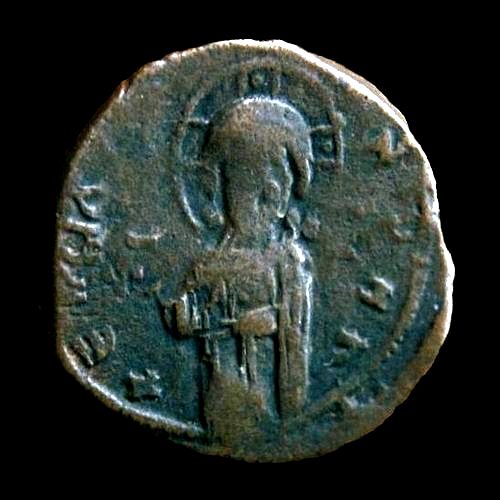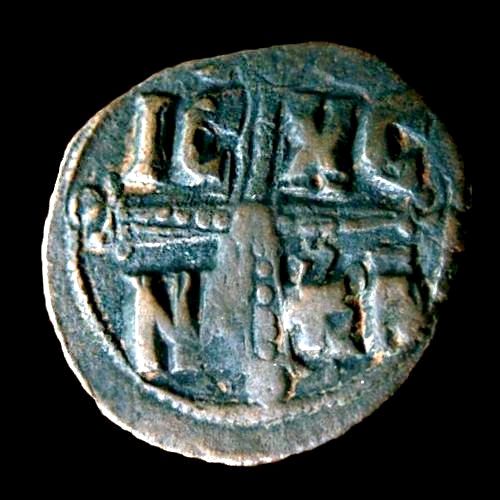Michael IV, the Paphlagonian, was married to the empress Zoe, daughter of Constantine VIII. During his reign, Michael's brother John was responsible for government and the reform of both army and finances. Strict tax measures, however, made him unpopular. Michael secured a peace treaty with the Fatimids of Egypt and had some military success in Sicily. After initial setbacks Michael suppressed the Bulgarian revolt in 1041. In the same year he returned to Constantinpole where he died of an illness, probably related to him being subject to epileptic fits.
Obv. Christ Antiphonetes (epithet of Christ who gave his life for the salvation of mankind), wearing the nimbus cruciger, standing facing three-quarter length, with pallium and colobium, hand raised in benediction, holding the book of gospels, + EMMANOVHA.
The nimbus or halo surrounding the head indicates an aura of glorious power. Originally it was associated with Sol who was sometimes depicted on late Roman coins wearing either a radiate crown or a radiate nimbus. During the imperial era, from Antoninus Pius onward, emperors sometimes appeared nimbate.
The image of Christ did not appear on coins until the seventh century under the reign of Justinian II. Most of these coins portrayed a bust-length figure of a bearded Christ on the obverse. From the ninth century on Christ is usually shown enthroned; nimbate; wearing a
nimbus cruciger, a
pallium and
colobium, while holding a book of gospels with both hands. Sometimes he is depicted as the All- Sovereign Pantocrator. On many of these later Byzantine coins the emperor does not feature, and only Christ, King of Kings, is depicted.
Rev. Christian iconography continues on the reverse, showing a
jewelled cross with a pellet in each corner, dividing the Greek legend IC - XC - NI - KA (May Jesus Christ conquer) in quarters.



